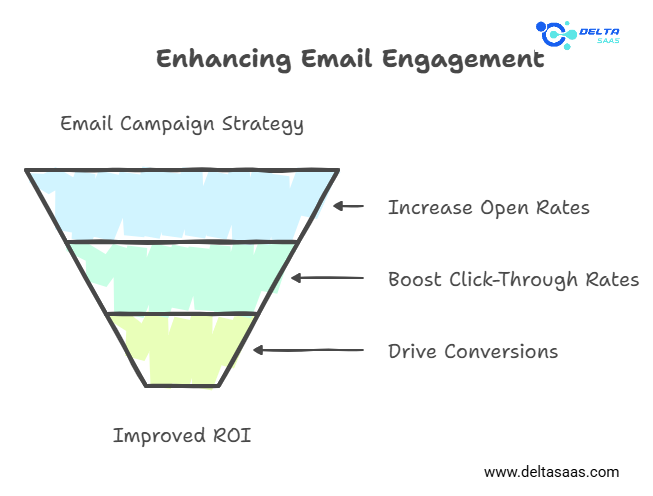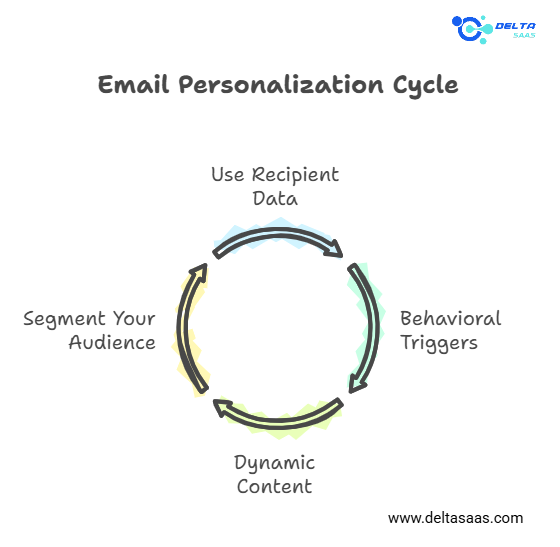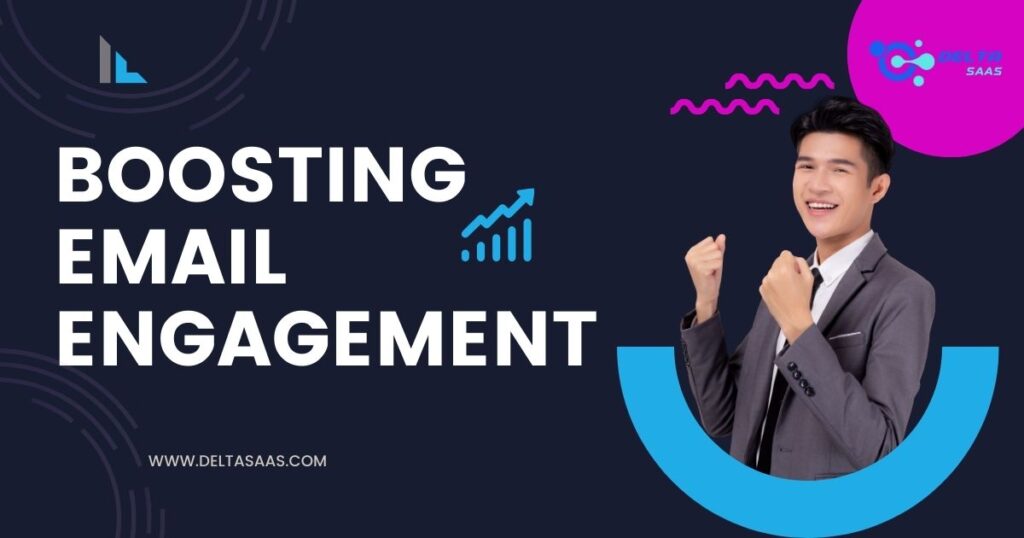
Boosting Email Engagement: Top Tips for Success
Email remains one of the most effective channels in digital marketing. However, getting recipients to engage with your emails—whether by opening, clicking, or taking action—can be challenging. Boosting email engagement is essential to increasing conversion rates, customer loyalty, and ROI. This guide outlines actionable tactics and best practices to help businesses enhance email engagement.
What Is Email Engagement?
Email engagement refers to the interactions recipients have with your emails. Key metrics include open rates, click-through rates, and the actions taken after clicking (e.g., purchase sign-ups).
Engagement is critical because it:
- Improves deliverability: Email service providers (ESPs) are more likely to send your emails to inboxes when engagement is high.
- Increases conversions: Engaged recipients are more likely to take desired actions.
- Builds relationships: Consistently engaging emails strengthen trust and loyalty.
Let’s develop strategies to boost email engagement and achieve better campaign results.

Craft Compelling Subject Lines
Subject lines are the gateway to higher open rates and improved engagement. Your email will not be opened if your subject line does not grab attention.
Best Practices for Writing Subject Lines:
- Keep It Short and Clear: Use 40–50 characters to ensure readability on all devices.
- Spark Curiosity: Phrases like “Don’t miss this opportunity” encourage readers to open up. up
- Personalization: Add the recipient’s name or mention their interests. For example, “John, Your Exclusive Offer Awaits.”
- Use Numbers. Numbers make emails stand out. For example, “5 Ways to Save on Your Next Purchase.”
- Create Urgency: Phrases like “Ends Today” or “Last Chance” drive immediate action.
A/B Testing Tip: Test multiple subject line variations to see what resonates with your audience. Monitor open rates for each variation and use data to refine future campaigns.
Also Read,
Constant Contact Benefits for Effective Email Marketing
Constant Contact Pricing: An In-Depth Guide
Dragit Lifetime Deal: Create Professional Emails
Dynosend Lifetime Deal: Smarter Automate Email Marketing
Email List Validation Lifetime Deal: Improve Your Marketing Results
Emailit Lifetime Deal: Simplify Email Marketing
GetResponse Benefit: Grow Your Business with Ease
GetResponse Features: Advanced Marketing Tools

Personalize Your Emails
Generic emails feel impersonal and fail to engage recipients. Personalization is one of the most effective ways to make your emails more relevant and appealing.
How to Personalize Your Emails:
- Use Recipient Data: Incorporate the subscriber’s name, location, or past purchase history.
- Behavioral Triggers: Send emails based on specific actions, such as abandoned carts or recent downloads.
- Dynamic Content: Customize email sections based on user preferences or demographics.
- Segment Your Audience: Divide your email list into smaller groups based on age, gender, or behavior.
Example of Personalization in Action:
Subject Line: “Jane, Your Favorite Items Are Back in Stock!”
Body: Recommend products similar to the ones they browsed or purchased.
By tailoring content to individual recipients, you create a stronger connection, which leads to better engagement and conversions.
Read More: Best Ways to Increase Traffic to Your Website with Proven Methods
Segment Your Email List
Audience segmentation is dividing your email list into smaller, targeted groups. Sending relevant emails to specific segments increases engagement by ensuring the message resonates with the recipient.
Ways to Segment Your Audience:
- Demographics: Age, gender, location, income level.
- Purchase Behavior: First-time buyers, repeat customers, or those who haven’t purchased.
- Engagement Level: Active subscribers vs. those who haven’t opened an email in 3+ months.
- Interests: Based on preferences selected during sign-up or inferred from past interactions.
Benefits of Segmentation:
- Higher open and click-through rates.
- Reduced unsubscribe rates by avoiding irrelevant content.
- Improved conversion rates by sending targeted offers.
Marketing automation platforms like HubSpot or Klaviyo make segmentation easy, allowing you to create personalized campaigns for different audience groups.
Focus on Email Design and Templates
An email’s visual appeal plays a significant role in engagement. Recipients will quickly lose interest if their emails are cluttered, hard to read, or poorly designed.
Email Design Best Practices:
- Mobile-Friendly Templates: Over 50% of emails are opened on mobile devices. Use responsive templates that look great on any screen size.
- Use Visual Hierarchy: Place the most essential information (like CTAs) at the top.
- Add Eye-Catching Images: Use high-quality visuals that enhance the content.
- Make It Scannable: Use headings, bullet points, and short paragraphs to improve readability.
- Use Brand Elements: Incorporate your logo, colors, and fonts for consistency.
Interactive Elements to Boost Engagement:
- Add clickable buttons for CTAs.
- Include GIFs or videos to make the email dynamic.
- Use carousels to showcase multiple products or services.
Investing in professional email templates and optimizing for design creates a better user experience that engages readers.
Include Clear Calls-to-Action (CTAs)
Every email should have a clear purpose, and your CTA should bridge the content and the desired action. A weak or unclear CTA can lead to confusion and missed opportunities.
Tips for Creating High-Converting CTAs:
- Action-Oriented Language: Use verbs like “Shop,” “Download,” or “Claim.” Example: “Claim Your Free Ebook Now.”
- Keep It Simple: Focus on one primary CTA per email to avoid overwhelming readers.
- Make It Stand Out: Use a contrasting color for CTA buttons and position them prominently.
- Add Urgency: Use phrases like “Limited Time Offer” or “Act Now” to encourage immediate action.
CTA Placement:
- Place the first CTA above the fold (visible without scrolling).
- Include a second CTA toward the end for readers who scroll through the entire email.
Strong CTAs drive conversions by clearly guiding recipients toward the next step.
Use Marketing Automation
Marketing automation allows businesses to send timely, relevant, personalized emails without manual effort. This ensures that each subscriber receives the right content at the right time, leading to higher engagement.
Examples of Automated Campaigns:
- Welcome Series: Greet new subscribers with emails introducing your brand.
- Abandoned Cart Emails: Remind customers about items left in their cart and encourage them to complete the purchase.
- Re-Engagement Campaigns: Target inactive subscribers with incentives to return.
- Behavioral Triggers: Send emails based on user actions, such as signing up for a webinar or downloading a lead magnet.
Benefits of Marketing Automation:
- Saves time by automating repetitive tasks.
- Increases personalization at scale.
- Improves campaign ROI by targeting specific customer behaviors.
Platforms like ActiveCampaign and Mailchimp offer robust automation features to help you implement these strategies seamlessly.
Read More: Email A/B Testing Mistakes to Avoid
Leverage Interactive Content to Drive Engagement
Interactive content is a game-changer in email marketing. It encourages recipients to interact with your email instead of passively reading it, leading to higher engagement rates.
Examples of Interactive Email Content:
- Polls and Surveys: Ask readers for feedback or opinions on specific topics.
- Quizzes: Let users discover something about themselves (e.g., “Which product suits you best?”).
- Countdown Timers: Create urgency for limited-time offers or events.
- Clickable Carousels: Showcase multiple products or services in a single email.
- Gamification Elements: Make emails fun with scratch cards, spin-to-win games, or challenges.
Benefits of Interactive Emails:
- Keeps recipients engaged for longer.
- Provides valuable insights into customer preferences.
- Differentiates your campaigns from competitors’ static emails.
Adding one interactive element to your emails can boost click-through rates and drive conversions.
Send Timely and Relevant Emails
Timing is crucial for email engagement. Sending emails when your audience is active ensures better open rates and higher engagement.
How to Time Your Emails Effectively:
- Analyze Past Data: Use metrics to identify when your audience typically opens emails.
- Consider Time Zones: Schedule emails to match the recipient’s local time.
- Follow General Trends:
- For B2B audiences, mid-morning on weekdays works best.
- For B2C audiences, evenings and weekends often perform better.
- Seasonal and Event-Based Emails: Send campaigns for holidays, product launches, or significant events.
Example of Timely Emails:
- Welcome Emails: Sent immediately after a subscriber joins your list.
- Abandoned Cart Reminders: Delivered within 24 hours of cart abandonment.
- Post-Purchase Emails: Sent shortly after a purchase to upsell or ask for reviews.
By sending the right message at the right time, you keep your audience engaged and improve the chances of conversion.
Read more: Email Deliverability Issues: Causes & Fixes
Make It Mobile-Responsive
With over half of emails opened on mobile devices, ensuring mobile responsiveness is non-negotiable. Emails that don’t display correctly on small screens lead to high bounce rates and lost engagement opportunities.
Tips for Mobile Optimization:
- Responsive Design: Use templates that automatically adjust to different screen sizes.
- Concise Subject Lines: Keep subject lines under 40 characters to avoid truncation.
- Readable Fonts: Use a minimum font size of 14px for body text and 22px for headlines.
- Thumb-Friendly CTAs: Make buttons large and tappable, with enough spacing around them.
- Minimize Load Times: Compress images to ensure quick loading, especially for users with slower internet connections.
Test Your Emails: Before sending, test your emails on multiple devices (e.g., smartphones, tablets, desktops) to ensure a seamless experience for all recipients.
Encourage Social Sharing
Integrating social media with your email campaigns can amplify your reach and engagement. Encouraging subscribers to share your content on platforms like Facebook, Twitter, or LinkedIn helps you tap into new audiences.
Ways to Boost Social Sharing:
- Add Social Media Buttons: Include easy-to-spot share icons for key platforms.
- Offer Incentives: Reward users for sharing, such as offering discounts or free content.
- User-Generated Content (UGC): In your emails, highlight customer photos, testimonials, or reviews and encourage others to share their experiences.
- Ask for Referrals: Use email campaigns to encourage subscribers to invite friends in exchange for rewards.
An example CTA for Social Sharing:
“Love this deal? Share it with your friends and get 10% off your next order!”
Social sharing extends the lifespan of your emails and exposes your brand to a broader audience, boosting engagement and conversions.
Perform A/B Testing
A/B testing is a powerful way to improve email performance by experimenting with different campaign elements. This process helps you identify what resonates best with your audience.
What to Test in A/B Campaigns:
- Subject Lines: Test urgency, personalization, or humor.
- Email Layouts: Compare single-column vs. multi-column designs.
- CTA Placement: Experiment with CTAs above the fold vs. at the end of the email.
- Sending Times: Analyze the impact of morning vs. evening sends.
- Visual Elements: Test emails with or without images or videos.
How to Conduct A/B Testing:
- Test one variable at a time for accurate results.
- Split your audience into two equal groups.
- Measure performance using key metrics like open rate, click-through rate, or conversions.
- Apply the insights to future campaigns.
Regular A/B testing helps you refine your strategy and create consistently engaging emails.
Read More: How to Improve Conversion Rate in Email Campaigns
Clean and Maintain Your Email List
A bloated email list with inactive or invalid addresses can harm engagement rates. Regularly cleaning your list ensures your emails reach a relevant, engaged audience.
How to Clean Your Email List:
- Remove subscribers who haven’t engaged in the past 6–12 months.
- Identify and delete invalid or fake email addresses.
- Send re-engagement campaigns to dormant subscribers before removing them.
- Use double opt-in methods to ensure only interested users join your list.
Benefits of Maintaining a Healthy List:
- Improves open and click-through rates.
- Reduces bounce rates and spam complaints.
- Boosts sender reputation and email deliverability.
A clean list leads to higher engagement and helps you focus on subscribers who are genuinely interested in your content.
Monitor and Analyze Metrics
Tracking key metrics allows you to measure your campaigns’ effectiveness and identify areas for improvement.
Essential Email Metrics to Monitor:
| Metric | Purpose |
| Open Rate | Measures the effectiveness of subject lines. |
| Click-Through Rate | Indicates how engaging your content and CTAs are. |
| Conversion Rate | Tracks how many recipients completed a desired action. |
| Bounce Rate | Identifies deliverability issues with your emails. |
| Unsubscribe Rate | Reflects audience dissatisfaction or list fatigue. |
How to Use Data for Optimization:
- If open rates are low, tweak subject lines and sender names.
- For low click-through rates, improve CTA visibility and email copy.
- Monitor bounce rates to identify issues with email deliverability.
Analytics tools like Google Analytics, Mailchimp, or HubSpot provide insights into your campaign performance, helping you make data-driven decisions.
Leverage Behavioral Triggers for Automated Campaigns
Behavioral triggers are one of the most effective ways to boost email engagement. These are automated emails sent based on a recipient’s specific actions or inactions, making them highly relevant and timely.
Examples of Behavioral Trigger Emails:
- Welcome Emails: Sent immediately after someone subscribes to your list to introduce your brand and set expectations.
- Abandoned Cart Emails: These emails remind customers of the items left in their shopping cart and encourage them to complete the purchase.
- Re-Engagement Emails: Target inactive subscribers with a special offer or survey to bring them back.
- Post-Purchase Follow-Ups: Send thank-you emails, upsell recommendations, or requests for reviews after a purchase.
- Milestone Emails: Celebrate customer birthdays, anniversaries, or achievements (e.g., “Happy 1 Year as a Subscriber!”).
Benefits of Triggered Emails:
- Higher open and click-through rates due to their relevance.
- Increased customer satisfaction through timely responses.
- Improved revenue from actions like abandoned cart recovery.
Platforms like Klaviyo and ActiveCampaign allow you to easily set up behavioral triggers and personalize automated workflows to match customer journeys.
Read More: How to Increase Click-Through Rate in Email Marketing: A Complete Guide
Encourage User-Generated Content (UGC)
User-generated content (UGC) adds authenticity and boosts engagement by showcasing your customers’ voices. When subscribers see their content or contributions featured, they feel valued and are more likely to interact with your brand.
Ways to Incorporate UGC into Emails:
- Photo Galleries: Feature customer photos of your products.
- Testimonials and Reviews: Highlight positive feedback from satisfied customers.
- Social Media Integration: Include a “tag us on Instagram” section and showcase recent posts.
- Contest Announcements: Run a UGC contest and feature winners in your emails.
Example of a UGC Email Campaign:
Subject Line: “See How Our Customers Are Loving [Your Product]!”
Body: Highlight 2–3 user photos or reviews with CTAs like “Share Your Story.”
Encouraging UGC builds trust and engagement by showing that your brand values its customers’ input.
Be Consistent and Build Trust
Consistency is crucial for boosting email engagement. When subscribers know what to expect, they’re likelier to open and interact with your emails.
How to Maintain Consistency in Email Marketing:
- Establish a Schedule: Stick to a regular cadence, whether weekly newsletters or monthly updates.
- Be Transparent: Tell subscribers what kind of content they’ll receive and how often.
- Use a Consistent Tone and Design: Your emails should be aligned with your brand’s voice, style, and visuals.
- Avoid Over-Promising: Deliver what your subject line promises to build trust and avoid disappointing recipients.
Consistency builds credibility, keeps your audience engaged, and strengthens your brand’s relationship with its subscribers.
Encourage Social Proof
Social proof, such as testimonials, reviews, or statistics, helps build credibility and encourages engagement. When recipients see others benefiting from your product or service, they’re more likely to take action.
How to Include Social Proof in Emails:
- Customer Testimonials: Share quotes from satisfied clients.
- Case Studies: Provide real-world examples of how your product helped solve a problem.
- Trust Badges: Include badges such as “5-Star Reviews” or “Trusted by 1,000+ Businesses.”
- Numbers and Statistics: Highlight data like “Join 50,000 Subscribers” or “90% Customer Satisfaction.”
Example Email Copy with Social Proof:
“Over 10,000 happy customers have boosted their productivity with [Your Product]. See how you can benefit, too!”
Including social proof in your emails reassures recipients and makes your offering more compelling.
Monitor Engagement and Adjust Strategies
Regularly evaluating the performance of your email campaigns ensures that you stay on track and continue to meet your goals. Monitoring engagement metrics and making data-driven adjustments can significantly boost your results.
Steps to Monitor and Improve Engagement:
- Track Performance Metrics: Measure open rates, click-through rates, conversion rates, and unsubscribe rates.
- Identify Underperforming Campaigns: Look for low engagement patterns to identify areas for improvement.
- Test and Iterate: Use A/B testing to refine subject lines, designs, CTAs, and content.
- Adjust Frequency: Monitor how often you send emails and ensure they align with subscriber preferences.
- Use Feedback: Act on survey feedback or direct replies to improve your campaigns.
Example Adjustment Strategy:
If you notice a drop in open rates, experiment with shorter subject lines or personalized greetings. If click-through rates are low, test different CTAs or offer incentives like discounts.
Based on the data, you can achieve consistent engagement growth by optimizing your email strategy.
Read more: Why Is Email Marketing Ineffective? Common Issues
Conclusion
Boosting email engagement is essential for achieving better ROI and building stronger relationships with your audience. Implementing strategies like personalizing emails, segmenting your audience, leveraging automation, and incorporating interactive elements can significantly improve your campaign performance.
Consistent testing, monitoring metrics, and adapting to your audience’s preferences are key to maintaining high engagement levels. When done right, email marketing remains one of the most powerful tools in your digital marketing strategy.
FAQs
What is a reasonable email engagement rate?
A reasonable engagement rate includes an open rate of 20–30% and a c–5%. click-through rate
How do I boost my email open rates?
Focus on writing compelling subject lines, personalizing emails, and sending them at the right time.
How can I improve click-through rates?
Use clear, action-oriented CTAs, engaging visuals, and relevant, value-driven content.
Why is personalization important in email marketing?
Personalization makes emails more relevant and engaging, increasing open and click-through rates.
How often should I send emails to my subscribers?
It depends on your audience and goals. While weekly or bi-weekly emails work for most businesses, subscriber preferences should always be considered.
What is the role of interactive content in email engagement?
Interactive content like polls, quizzes, and countdown timers keeps recipients engaged and encourages clicks.
How do I clean my email list?
Remove inactive subscribers, delete invalid email addresses, and use re-engagement campaigns to identify active users.
What are behavioral trigger emails?
These are automated emails sent based on user actions, like abandoned cart emails or post-purchase thank-you emails.
How can I use social proof in my emails?
Include testimonials, case studies, or customer reviews to build trust and encourage engagement.
How do I know if my email campaigns are successful?
Monitor metrics like open rates, click-through rates, and conversion rates to evaluate performance.


